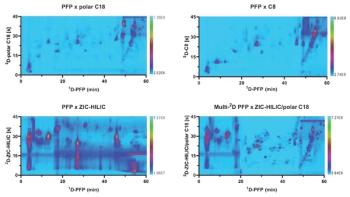
- The Column-03-20-2014
- Volume 5
- Issue 10
Growing Fruit — and Economies
This article details how a newly developed ?dilute-and-shoot? sample preparation methodology for LC–MS–MS multi-residue monitoring (MRM) pesticide screening can enable operators to overcome the matrix effects that have traditionally hindered routine food analysis.
Demand for exotic goods, such as wine and oranges, continues to grow in the western world. However, agricultural regulations can vary significantly from region to region. Regulatory bodies, such as the United States Food and Drug Association (US FDA), routinely screen all imported goods to ensure they meet the domestic limits of tolerance. Detection of low concentrations of pesticides within complex matrices, such as orange juice and wine, is a complex process that requires a high level of sensitivity. This article details how a newly developed “dilute-and-shoot” sample preparation method for LC–MS–MS multi-residue monitoring (MRM) pesticide screening can be performed to overcome matrix effects.
Articles in this issue
almost 12 years ago
A New Frontier: NanoLC–NanoESI–MS in Astrobiologyalmost 12 years ago
Novel Passive Sampling Using Silicone Wristbandsalmost 12 years ago
A Look to the Futurealmost 12 years ago
Fluoride Analysis of Ice Cores Using Fast Ion Chromatographyalmost 12 years ago
Vol 10 No 5 The Column March 20, 2014 North American PDFalmost 12 years ago
Vol 10 No 5 The Column March 20, 2014 Europe and Asia PDFNewsletter
Join the global community of analytical scientists who trust LCGC for insights on the latest techniques, trends, and expert solutions in chromatography.




